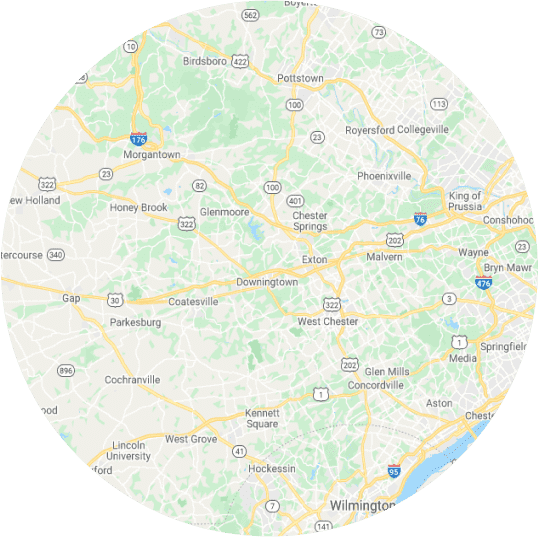How Best to Navigate the Refrigerant Landscape in 2025
7 min Read
|
Getting your Trinity Audio player ready...
|
Are you unsure about the compatibility of certain refrigerants with your AC system? Struggling to keep up with the new restrictions and regulations?
As the world continues to battle climate change, the HVAC industry is undergoing rapid and significant changes tied to heightened energy efficiency regulations of systems and refrigerants.
Refrigerant makes modern air conditioning possible but has varying impacts on the environment including contributions to ozone depletion and global warming.
As awareness of this has grown in recent decades, the Environmental Protection Agency (EPA) has introduced restrictions and regulations on CFCs, HCFCs, and HFCs to reduce the environmental footprint of refrigerants.
At Mattioni, we know that understanding the changes about which refrigerant to use in your home’s cooling system can be challenging, considering the updates have become more frequent in recent years. The best way to make the ongoing refrigerant regulations and updates understandable is to know the environmental reasons behind them.
In this article, we will first explain the environmental considerations, like ODP and GWP, that drive energy efficiency restrictions in the HVAC industry. We’ll then delve into the current state of refrigerants in 2024 and 2025 focusing on recent updates, EPA restrictions, and comparisons between some of the most discussed refrigerants today.
Understanding ODP, GWP & EPA Restrictions on Refrigerants
Ozone depletion potential (ODP) and global warming potential (GWP) are two distinct environmental issues caused by refrigerants, among other chemicals.
GWP was introduced in the late 1980s as a metric to compare the relative warming impacts of different greenhouse gases over different time periods. One GWP is equivalent to the same warming effect as one kilogram of carbon dioxide
ODP is defined as the ratio of the global loss of ozone due to a substance to the global loss of ozone due to CFC-11 of the same mass. In other words, ODP measures the thinning and reduction of the ozone layers in the Earth’s stratosphere caused by different substances.
GWP and ODP help to understand and quantify the long-term effects of, among other chemicals, refrigerants and are used to guide EPA policy and regulatory decisions aimed at mitigating climate change.
These metrics are essential to understanding the reasoning behind the 2025 refrigerant changes.
The 2025 Refrigerant Outlook: R-32, R-454B
The refrigerant production and consumption landscape is rapidly changing amid tightening environmental regulations.
R-410A, once considered an environmentally friendly refrigerant in the early 1990s, is being widely restricted by the EPA in efforts to eliminate its use and lead consumers to purchase greener alternatives.
Going into 2025, here are the high-efficiency, low global warming potential (GWP) refrigerants to look out for and use in HVAC systems:
- R-32: Higher energy efficiency and lower GWP compared to R-410A. Is cheaper to manufacture and purchase.
- R-454B: Lower GWP than R-410A and an energy-efficient option that’s compatible with some older equipment.
- R-452B: Lower GWP than R-410A, but similar energy efficiency performance.
- R-1234ze: Alternative refrigerant with extremely low GWP and high energy efficiency. Compatible with heat pump systems only.
These refrigerants represent a shift towards more environmentally friendly options with lower GWP and zero ODP, aligning with global efforts to reduce the environmental impact of air conditioning systems.
In the next year, expect R-32 to become the most widely used refrigerant, followed by R-454B, as R-410A is removed from shelves.
The reason why there are so many different refrigerants available today is clear when you understand the chemical’s history.
The Past, Present, and Future of Refrigerants in HVAC Systems
The Rise and Phase Out of R-22
- R-22 (Freon)
- GWP: 1,810
- ODP: 0.05
R-22 (chlorodifluoromethane) refrigerant was introduced in the 1930s and became widely used in some of the first modern AC and refrigeration systems. It made population centers in places like Phoenix, AZ possible.
R-22 was phased out in 1987 through the international Montreal Protocol agreement due to its high GWP and is no longer produced or imported into the United States. It can still be found in some older HVAC units that haven’t been updated in several decades.
R-410A vs. R-22
- R-410A (Puron)
- GWP: 2,088
- ODP: 0
Although it has a higher GWP than R-22, R-410A was developed in the 1990s as its replacement because it has zero impact on the ozone. R-410A is also more efficient at cooling than R-22, which is reflected in the SEER & SEER2 ratings of the AC and heat pump systems using it.
R-410A became widely accepted in the HVAC industry at the turn of the century, and by 2010 it was the standard refrigerant for new air conditioning systems.
In 2016, however, the efforts to develop low-GWP refrigerants gained support, and the Kigali Amendment of the Montreal Protocol led to the official development of R-454B. This amendment is intended to reduce the use of HFCs by more than 80% over the next 30 years and avoid up to 0.7°F of global warming by the end of this century.
Because of these environmental considerations, R-410A began to be phased out in 2019 and is still being worked out of the market today.
R-454B vs. R-410A
- R-454B (Puron Advance)
- GWP: 466
- ODP: 0
R-454B was designed by Carrier as a low-GWP replacement for R-410A. It received regulatory approval in the late 2010s and implementation in the HVAC industry in 2023. R-454B has a comparable energy efficiency to R-410A, and some studies have found that it can achieve slightly superior SEER2 ratings.
From a safety perspective, both R-454B and R-410A are both listed as A1 refrigerants, indicating low toxicity and low flammability.
While it’s been adopted by the HVAC industry, R-454B is still gaining widespread attention as the new refrigerant mainstay – for now. The future holds more changes to the regulations surrounding refrigerant production and consumption.
R-32 vs. R-454B
- R-32
- GWP: 675
- ODP: 0
R-32 represents the current state of refrigerants in 2024 and 2025. It was developed as an environmentally friendly alternative to R-410A, much like R-454B. Despite having a higher GWP than R-454B, R-32 has surpassed it in many professional opinions due to its outstanding energy efficiency.
R-32 is poised to be the market leader in 2025 because it can lower your home’s carbon footprint and monthly utility bills.
The HVAC industry’s goal of eliminating R-410A by 2030 will be achieved, and although there are some other alternatives still available, R-32 and R-454B are set to grow in popularity and take its place.
The Future Outlook for Sustainable HVAC Practices
The shift towards lower GWP and ODP refrigerants is evident across the HVAC industry. Manufacturers are increasingly developing systems compatible with newer refrigerants like R-454B and R-32. The EPA continues to play a crucial role in regulating and guiding this transition, ensuring that the industry moves towards more sustainable practices.
At Mattioni, these regulations and changes directly affect all of our HVAC practices. We are committed to doing our part at the frontline of this battle, by implementing more sustainable heating and cooling systems.
For homeowners, understanding the benefits and limitations of each option that goes into your home’s AC system will help to make informed decisions that align with environmental goals and regulatory requirements. If you’re considering a new AC installation, make sure to talk with your installation company about using up-to-date refrigerants like R-32 and R-454B.
Transitioning to newer refrigerants may involve upfront costs, but the long-term environmental and financial benefits make it a worthwhile investment. As we move forward, the commitment to sustainability will continue to shape the future of refrigerants and the HVAC industry as a whole.
For any questions about complying with refrigerant codes or to schedule an inspection and tune-up to check your refrigerant, call 610-400-8510 or book an appointment online.










